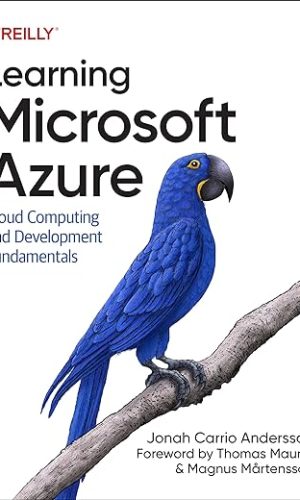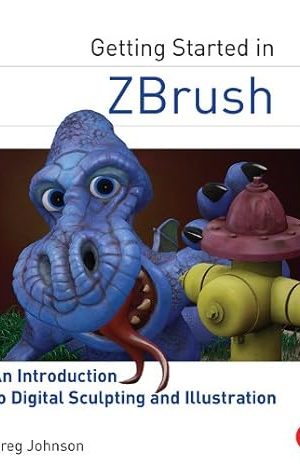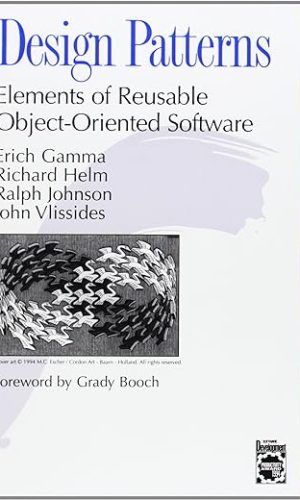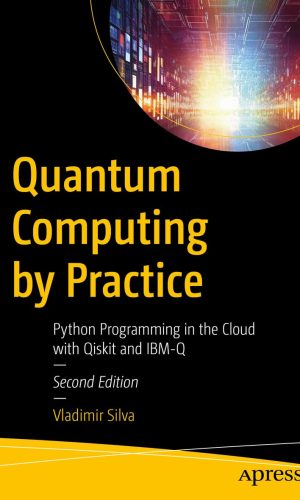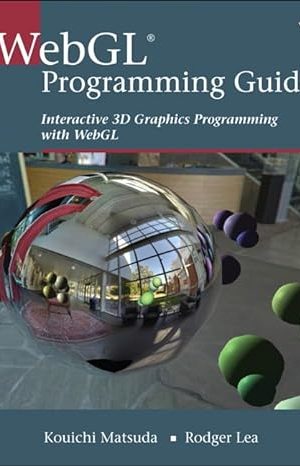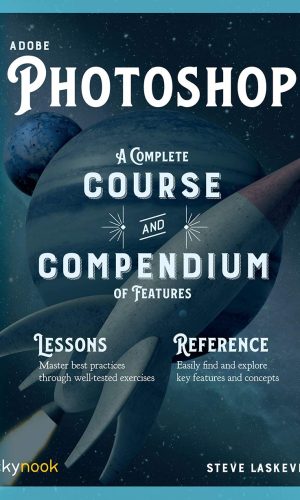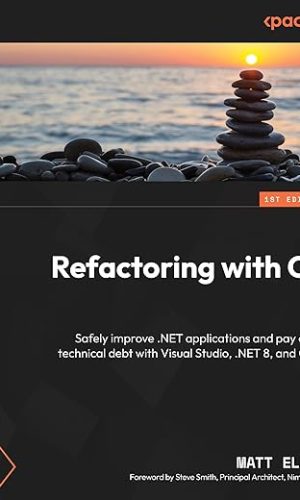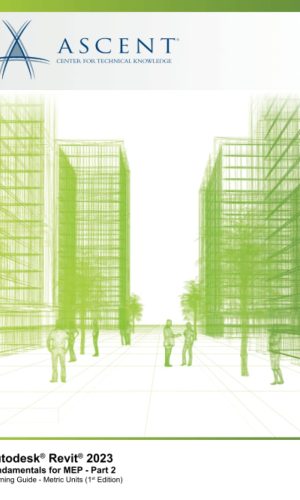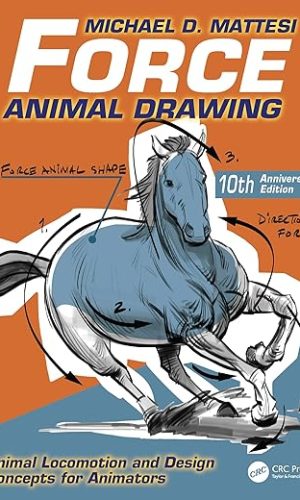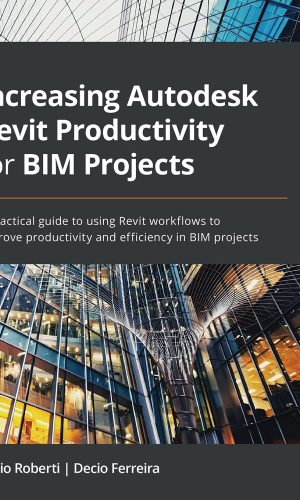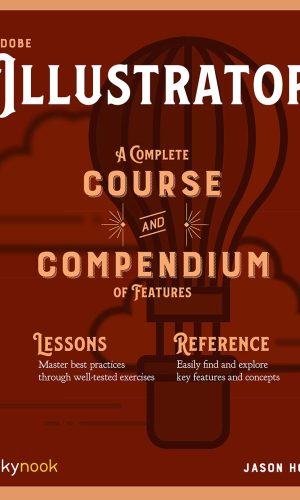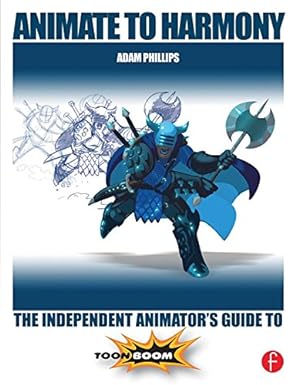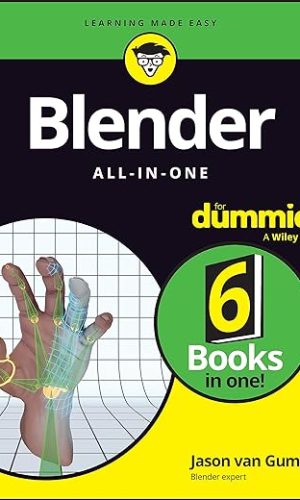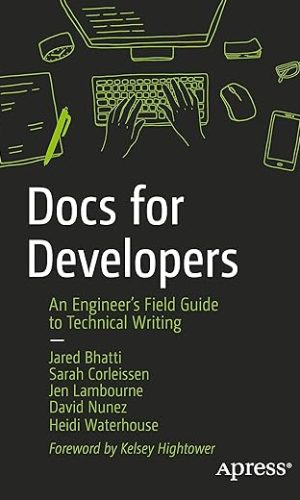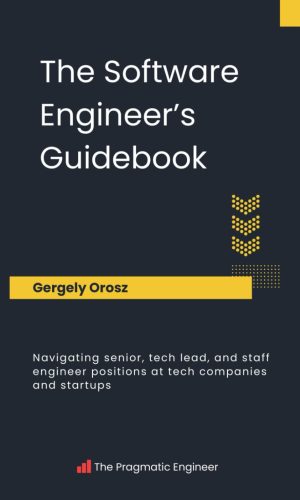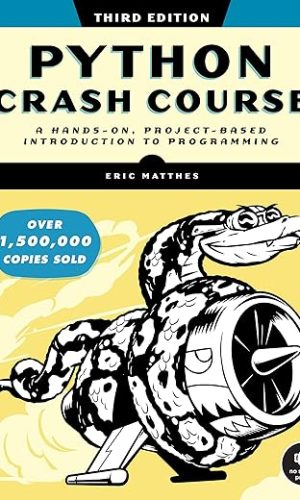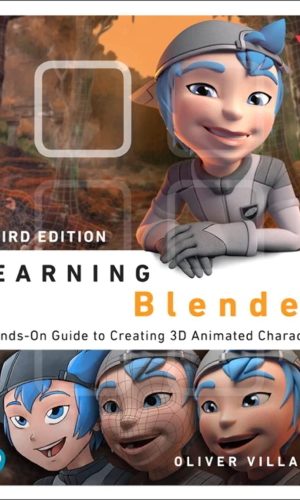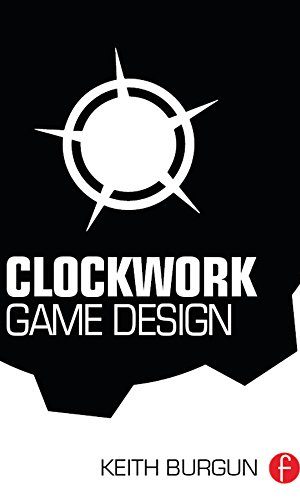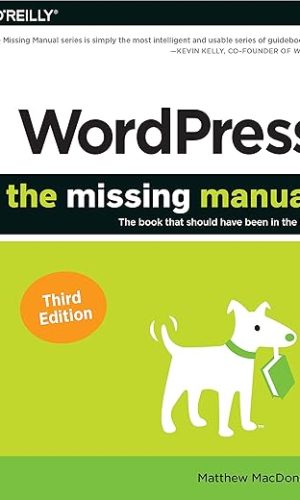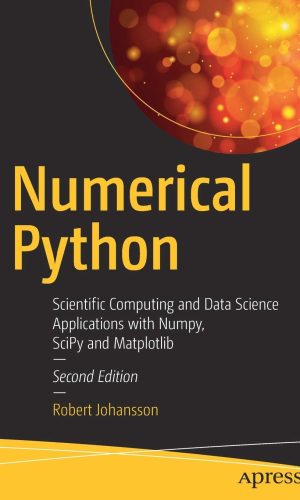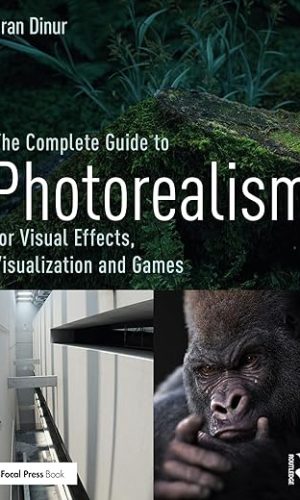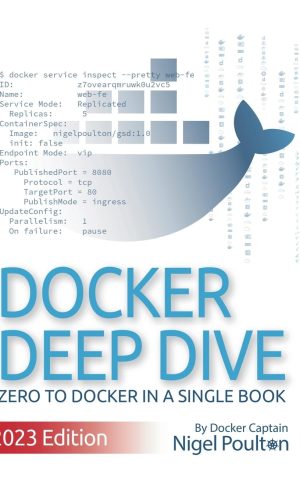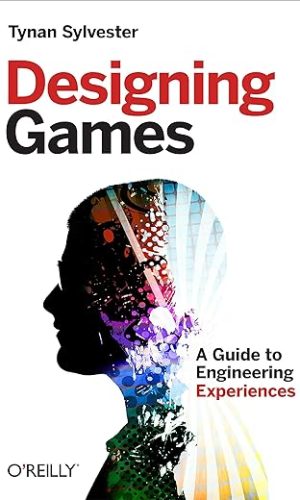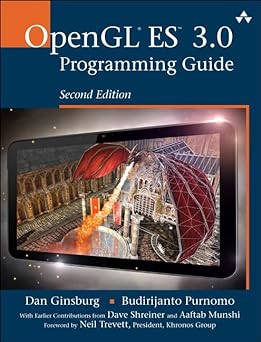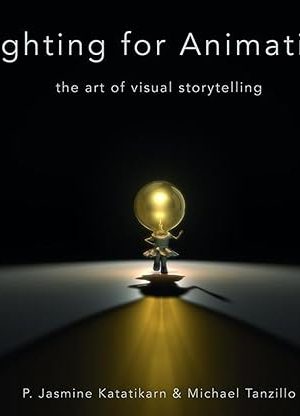-
Learning Microsoft Azure: Cloud Computing and Development Fundamentals
If your organization plans to modernize services and move to the cloud from legacy software or a private cloud on premises, this book is for you. Software developers, solution architects, cloud engineers, and anybody interested in cloud technologies will learn fundamental concepts for cloud computing, migration, transformation, and development using Microsoft Azure.
Author and Microsoft MVP Jonah Carrio Andersson guides you through cloud computing concepts and deployment models, the wide range of modern cloud technologies, application development with Azure, team collaboration services, security services, and cloud migration options in Microsoft Azure.
You’ll gain insight into the Microsoft Azure cloud services that you can apply in different business use cases, software development projects, and modern solutions in the cloud. You’ll also become fluent with Azure cloud migration services, serverless computing technologies that help your development team work productively, Azure IoT, and Azure cognitive services that make your application smarter. This book also provides real-world advice and best practices based on the author’s own Azure migration experience.
- Gain insight into which Azure cloud service best suits your company’s particular needs
- Understand how to use Azure for different use cases and specific technical requirements
- Start developing cloud services, applications, and solutions in the Azure environment
- Learn how to migrate existing legacy applications to Microsoft Azure
Read more
£40.20£50.30 -
The Indie Game Developer Handbook
The indie game developer’s complete guide to running a studio.
The climate for the games industry has never been hotter, and this is only set to continue as the marketplace for tablets, consoles and phones grow. Seemingly every day there is a story of how a successful app or game has earned thousands of downloads and revenue. As the market size increases, so does the number of people developing and looking to develop their own app or game to publish. The Indie Game Developer Handbook covers every aspect of running a game development studio―from the initial creation of the game through to completion, release and beyond.
-
- Accessible and complete guide to many aspects of running a game development studio from funding and development through QA, publishing, marketing, and more.
- Provides a useful knowledge base and help to support the learning process of running an indie development studio in an honest, approachable and easy to understand way.
- Case studies, interviews from other studies and industry professionals grant an first-hand look into the world of indie game development
Read more
£39.40£40.80The Indie Game Developer Handbook
£39.40£40.80 -
-
Getting Started in ZBrush: An Introduction to Digital Sculpting and Illustration
Getting Started in ZBrush is a gentle introduction to ZBrush, today’s premier digital sculpting program. Beginning with the fundamentals of digital sculpting as well as a thorough introduction to the user interface, Getting Started in ZBrush will have you creating a variety of professional-level 3D models in no-time. More than just another button-pushing manual, this comprehensive guide is packed with start-to-finish projects that ease you into the workflow of the program, while at the same time providing tips and tricks that will allow you to achieve certain tasks much more quickly. After progressing through the tutorials, you will be shown how to customize brushes, materials, scripts, and the interface so that you can utilize these tools to their full advantage.
Special consideration is given to ZBrush’s integration plug-ins with Maya and 3ds Max, allowing you to properly import and export your models in all programs. Texturing, painting, mapping, decimation, baking, and topology are also fully covered so your Zbrush creations can come to life without sacrificing that high-resolution look.
- Ease your way into this complex subject with this straight-forward approach to ZBrush
- Perfect your technique with step-by-step tutorials that allow you to create high res models from start to finish.
- Expand your knowledge by visiting the companion website, which features video demonstrations, project files, texture and model files, scripts, customized menus, brushes, and additional resources.
Read more
£38.80 -
The Art Of Uncharted 2 Among Thieves (Art of the Game)
Ballistic Publishing has partnered with Sony Computer Entertainment America and Naughty Dog, Inc., to produce The Art of Uncharted 2: Among Thieves. The biggest Ballistic Publishing art book to date weighs in at 272 pages and features some of the hundreds of drawings, paintings, and sculpts that began the process of making Nathan Drake’s world real, and helped make Uncharted 2: Among Thieves Game of the Year. From concept art to character studies, environment art, character modeling, game art, cinematics, motion-capture, animation, and effects, The Art of Uncharted 2: Among Thieves is the ultimate companion to the award-winning PlayStation 3 game.
Read more
£38.60 -
Design patterns : elements of reusable object-oriented software
Capturing a wealth of experience about the design of object-oriented software, four top-notch designers present a catalog of simple and succinct solutions to commonly occurring design problems. Previously undocumented, these 23 patterns allow designers to create more flexible, elegant, and ultimately reusable designs without having to rediscover the design solutions themselves.The authors begin by describing what patterns are and how they can help you design object-oriented software. They then go on to systematically name, explain, evaluate, and catalog recurring designs in object-oriented systems. With Design Patterns as your guide, you will learn how these important patterns fit into the software development process, and how you can leverage them to solve your own design problems most efficiently.
Each pattern describes the circumstances in which it is applicable, when it can be applied in view of other design constraints, and the consequences and trade-offs of using the pattern within a larger design. All patterns are compiled from real systems and are based on real-world examples. Each pattern also includes code that demonstrates how it may be implemented in object-oriented programming languages like C++ or Smalltalk.
Read more
£38.40£42.30 -
Quantum Computing by Practice: Python Programming in the Cloud with Qiskit and IBM-Q
Learn to write algorithms and program in the new field of quantum computing. This second edition is updated to equip you with the latest knowledge and tools needed to be a complex problem-solver in this ever-evolving landscape. The book has expanded its coverage of current and future advancements and investments by IT companies in this emerging technology. Most chapters are thoroughly revised to incorporate the latest updates to IBM Quantum’s systems and offerings, such as improved algorithms, integrating hardware advancements, software enhancements, bug fixes, and more.
You’ll examine quantum computing in the cloud and run experiments there on a real quantum device. Along the way you’ll cover game theory with the Magic Square, an example of quantum pseudo-telepathy. You’ll also learn to write code using QISKit, Python SDK, and other APIs such as QASM and execute it against simulators (local or remote) or a real quantum computer. Then peek inside the inner workings of the Bell states for entanglement, Grover’s algorithm for linear search, Shor’s algorithm for integer factorization, and other algorithms in the fields of optimization, and more. Finally, you’ll learn the current quantum algorithms for entanglement, random number generation, linear search, integer factorization, and others.
By the end of this book, you’ll understand how quantum computing provides massive parallelism and significant computational speedups over classical computers
What You’ll Learn
- Write algorithms that provide superior performance over their classical counterparts
- Create a quantum number generator: the quintessential coin flip with a quantum twist
- Examine the quantum algorithms in use today for random number generation, linear search, and more
- Discover quantum teleportation
- Handle the counterfeit coin problem, a classic puzzle
- Put your knowledge to the test with more than 150 practice exercises
Who This Book Is For
Developers, programmers, computer science researchers, teachers, and students.
Read more
£38.00 -
WebGL Programming Guide: Interactive 3D Graphics Programming with WebGL (OpenGL)
Using WebGL®, you can create sophisticated interactive 3D graphics inside web browsers, without plug-ins. WebGL makes it possible to build a new generation of 3D web games, user interfaces, and information visualization solutions that will run on any standard web browser, and on PCs, smartphones, tablets, game consoles, or other devices. WebGL Programming Guide will help you get started quickly with interactive WebGL 3D programming, even if you have no prior knowledge of HTML5, JavaScript, 3D graphics, mathematics, or OpenGL.
You’ll learn step-by-step, through realistic examples, building your skills as you move from simple to complex solutions for building visually appealing web pages and 3D applications with WebGL. Media, 3D graphics, and WebGL pioneers Dr. Kouichi Matsuda and Dr. Rodger Lea offer easy-to-understand tutorials on key aspects of WebGL, plus 100 downloadable sample programs, each demonstrating a specific WebGL topic.
You’ll move from basic techniques such as rendering, animating, and texturing triangles, all the way to advanced techniques such as fogging, shadowing, shader switching, and displaying 3D models generated by Blender or other authoring tools. This book won’t just teach you WebGL best practices, it will give you a library of code to jumpstart your own projects.
Coverage includes:
• WebGL’s origin, core concepts, features, advantages, and integration with other web standards
• How and basic WebGL functions work together to deliver 3D graphics
• Shader development with OpenGL ES Shading Language (GLSL ES)
• 3D scene drawing: representing user views, controlling space volume, clipping, object creation, and perspective
• Achieving greater realism through lighting and hierarchical objects
• Advanced techniques: object manipulation, heads-up displays, alpha blending, shader switching, and more
• Valuable reference appendixes covering key issues ranging from coordinate systems to matrices and shader loading to web browser settingsThis is the newest text in the OpenGL Technical Library, Addison-Wesley’s definitive collection of programming guides an reference manuals for OpenGL and its related technologies. The Library enables programmers to gain a practical understanding of OpenGL and the other Khronos application-programming libraries including OpenGL ES and OpenCL. All of the technologies in the OpenGL Technical Library evolve under the auspices of the Khronos Group, the industry consortium guiding the evolution of modern, open-standards media APIs.
Read more
£38.00 -
Adobe Photoshop (Course and Compendium): A Complete Course and Compendium of Features
Adobe Photoshop: A Complete Course and Compendium of Features is your guide to creating, editing, and enhancing images and designs in Adobe Photoshop. Whether you’re retouching a photograph, making a simulated chalk drawing, or creating a composite photo with a 3D drawing, Photoshop is the tool for you–and this book will teach you what you need to know.
First, with a complete Course that includes a set of projects and lessons derived from Adobe Certified Instructor Steve Laskevitch, you will learn the procedures needed to use Photoshop effectively and professionally. Dozens of lessons are included that can be applied to any graphics you have in mind. Through these step-by-step lessons, you’ll be exposed to all of Photoshop’s features in practical contexts and its best practices for optimal workflows. To complete the Course, we’ll supply lesson documents and their assets to download. These can even serve as starting points for your own projects.
Then, for greater depth of knowledge and subsequent reference, you’ll use the Compendium to uncover more of the “how” and “why” of Photoshop. With each topic easy to access, you can find and explore all of Photoshop’s key features and concepts in depth. With cross references between the Course and Compendium, the two parts of the book complement each other perfectly. Best of all, when the lessons in the Course are done, the Compendium will continue to serve for months and years to come.
Learn step by step how to:
– Set up an ideal workspace
– Master selections and masks
– Work with type and brushes
– Use blend modes for combining images
– Take advantage of Smart Objects
– Become more efficient and effective with actions and scripts
– And much more!
Read more
£37.50 -
Refactoring with C#: Safely improve .NET applications and pay down technical debt with Visual Studio, .NET 8, and C# 12
Learn how to improve the maintainability of C# code using modern tools and techniques to resolve technical debt while working safely and efficiently with legacy code
Key Features
- Apply a wide range of refactoring techniques using the latest tools and features of C#
- Discover ways to safely improve your code using tests, Roslyn analyzers, and AI assistance
- Find ways of communicating technical debt and improving your code in agile and enterprise settings
- Purchase of the print or Kindle book includes a free PDF eBook
Book Description
Software projects start as brand-new greenfield projects, but invariably become muddied in technical debt far sooner than you’d expect. In Refactoring with C#, you’ll explore what technical debt is and how it arises before walking through the process of safely refactoring C# code using modern tooling in Visual Studio and more recent C# language features using C# 12 and .NET 8. This book will guide you through the process of refactoring safely through advanced unit testing with XUnit and libraries like Moq, Snapper, and Scientist .NET. You’ll explore maintainable code through SOLID principles and defensive coding techniques made possible in newer versions of C#. You’ll also find out how to run code analysis and write custom Roslyn analyzers to detect and resolve issues unique to your code.
The nature of coding is changing, and you’ll explore how to use AI with the GitHub Copilot Chat to refactor, test, document, and generate code before ending with a discussion about communicating technical debt to leadership and getting organizational buy-in to refactor your code in enterprise organizations and in agile teams.
By the end of this book, you’ll understand the nature of refactoring and see how you can safely, effectively, and repeatably pay down the technical debt in your application while adding value to your business.
What you will learn
- Understand technical debt, its causes and effects, and ways to prevent it
- Explore different ways of refactoring classes, methods, and lines of code
- Discover how to write effective unit tests supported by libraries such as Moq
- Understand SOLID principles and factors that lead to maintainable code
- Use AI to analyze, improve, and test code with the GitHub Copilot Chat
- Apply code analysis and custom Roslyn analyzers to ensure that code stays clean
- Communicate tech debt and code standards successfully in agile teams
Who this book is for
This book is for any developer familiar with C# who wants to improve the code they work with on a day-to-day basis. While this book will be most beneficial to new developers with only a year or two of experience, even senior engineers and engineering managers can make the most of this book by exploring not just the process of refactoring, but advanced techniques with libraries like Moq, Snapper, Scientist .NET, and writing custom Roslyn analyzers.
Table of Contents
- Technical Debt, Code Smells, and Refactoring
- Introduction to Refactoring
- Method-Level Refactorings
- Class-Level Refactorings
- Code-Level Refactorings
- Unit Testing
- Test Driven Development
- Avoiding Code Anti-Patterns with SOLID
- Advanced Unit Testing
- Defensive Coding Techniques
- AI-Assisted Refactoring with GitHub Copilot
- Code Analysis in Visual Studio
- Creating a Roslyn Analyzer
- Refactoring Code with Roslyn Analyzers
- Communicating Technical Debt
- Adopting Code Standards
- Agile Refactoring
Read more
£37.00 -
Autodesk Revit 2023: Fundamentals for MEP – Part 2 (Metric Units)
Note: This book is a continuation of Autodesk® Revit® 2023: Fundamentals for MEP – Part 1. Both books are required to complete this guide.
To take full advantage of Building Information Modeling, the Autodesk® Revit® 2023: Fundamentals for MEP guide has been designed to teach the concepts and principles of creating 3D parametric models of MEP systems from engineering design through construction documentation.
This guide is intended to introduce users to the user interface and the basic HVAC, electrical, and piping/plumbing components that make Autodesk Revit a powerful and flexible engineering modeling tool. The guide will also familiarize users with the tools required to create, document, and print the parametric model. The examples and practices are designed to take users through the basics of a full MEP project from linking in an architectural model to construction documents.
Topics Covered in Part 2
- Setting up sheets, and placing and modifying views on sheets.
- Working with dimensions, text, annotations, and legends.
- Adding tags and working with schedules.
- Setting up detail views and adding detail components.
Prerequisites
- Access to the 2023.0 version of the software, to ensure compatibility with this guide. Future software updates that are released by Autodesk may include changes that are not reflected in this guide. The practices and files included with this guide might not be compatible with prior versions (e.g., 2022).
- This guide introduces the fundamental skills you need to learn the Autodesk Revit MEP software. It is highly recommended that users have experience and knowledge in MEP engineering and its terminology.
- It is recommended that users have a standard three-button mouse to successfully complete the practices in this guide.
Read more
£35.90 -
FORCE: Drawing Human Anatomy (Force Drawing Series)
The newest book in Michael Mattesi’s Force Drawing series takes movement to the next level. Force: Drawing Human Anatomy, explores the different facets of motion and the human body. As opposed to the memorization technique, Mattesi stresses the function of each body part and how gravity relative to different poses affects the aesthetics and form of muscle. The chapters are divided by the different parts of the body, thus allowing the reader to concentrate on mastery one body part at a time. Color coded images detail each muscle and their different angles. Special consideration is given to anatomy for animation, allowing the reader to create a character that is anatomically accurate in both stillness and motion.
Key Features
- Detailed visual instruction includes colourful, step-by-step diagrams that allow you to easily follow the construction of an anatomically correct figure.
- Clearly organized and color coded per regions of the body’s anatomy, a clarity of design for better reader understanding.
- Learn how anatomy is drawn and defined by the function of a pose.
- Visit the companion website for drawing demonstrations and further resources on anatomy.
Read more
£35.90£37.00FORCE: Drawing Human Anatomy (Force Drawing Series)
£35.90£37.00 -
Digital Painting Techniques: Masters Collection: 01 (Digital Art Masters Series)
Discover the tips, tricks and techniques that really work for concept artists, matte painters and animators. Compiled by the team at 3dtotal.com, Digital Painting Techniques, Volume 1 offers digital inspiration with hands-on insight and techniques from professional digital artists. More than just a gallery book – within Digital Painting Techniques each artist has written a breakdown overview, with supporting imagery of how they made their piece of work. Beginner and intermediate digital artists will be inspired by the gallery style collection of the finest examples of digital painting from world renowned digital artists. Start your mentorship into the world of digital painting today with some of the greatest digital artists in the world and delve into professional digital painting techiques, such as speed painting, custom brush creation and matte painting. Develop your digital painting skills beyond the variety of free online digital painting tutorials and apply the most up to date techniques to your digital canvas with Digital Painting Techniques for Animators.Read more
£35.20£44.60 -
Elemental Magic , Volume 2: The Technique of Special Effects Animation
Design beautiful, professional-level animated effects with these detailed step-by-step tutorials from former Disney animator and animated effects expert Joseph Gilland. Filled with beautiful, full-color artwork, Elemental Magic, Volume II, breaks down the animated effect process from beginning to end-including booming explosions, gusting winds, magical incantations, and raging fires. He also breaks down the process of effects “clean-up,” as well as timing and frame rates. The companion website includes real-time footage of the author lecturing as he animates the drawings from the book. In these videos, he elucidates the entire process from blank page to final animation. See it all come to life like never before. Throughout the book, Joseph refers to and includes examples from his own professional work from feature films such as Lilo & Stitch and Tarzan.
Read more
£35.20£44.60 -
Clean Code: A Handbook of Agile Software Craftsmanship (Robert C. Martin) (Robert C. Martin Series)
Even bad code can function. But if code isn’t clean, it can bring a development organization to its knees. Every year, countless hours and significant resources are lost because of poorly written code. But it doesn’t have to be that way. Noted software expert Robert C. Martin presents a revolutionary paradigm with Clean Code: A Handbook of Agile Software Craftsmanship . Martin has teamed up with his colleagues from Object Mentor to distill their best agile practice of cleaning code “on the fly” into a book that will instill within you the values of a software craftsman and make you a better programmer—but only if you work at it. What kind of work will you be doing? You’ll be reading code—lots of code. And you will be challenged to think about what’s right about that code, and what’s wrong with it. More importantly, you will be challenged to reassess your professional values and your commitment to your craft. Clean Code is divided into three parts. The first describes the principles, patterns, and practices of writing clean code. The second part consists of several case studies of increasing complexity. Each case study is an exercise in cleaning up code—of transforming a code base that has some problems into one that is sound and efficient. The third part is the payoff: a single chapter containing a list of heuristics and “smells” gathered while creating the case studies. The result is a knowledge base that describes the way we think when we write, read, and clean code. Readers will come away from this book understanding How to tell the difference between good and bad code How to write good code and how to transform bad code into good code How to create good names, good functions, good objects, and good classes How to format code for maximum readability How to implement complete error handling without obscuring code logic How to unit test and practice test-driven development This book is a must for any developer, software engineer, project manager, team lead, or systems analyst with an interest in producing better code.Read more
£35.00£38.00 -
Clean Code: A Handbook of Agile Software Craftsmanship (Robert C. Martin) (Robert C. Martin Series)
Even bad code can function. But if code isn’t clean, it can bring a development organization to its knees. Every year, countless hours and significant resources are lost because of poorly written code. But it doesn’t have to be that way. Noted software expert Robert C. Martin presents a revolutionary paradigm with Clean Code: A Handbook of Agile Software Craftsmanship . Martin has teamed up with his colleagues from Object Mentor to distill their best agile practice of cleaning code “on the fly” into a book that will instill within you the values of a software craftsman and make you a better programmer—but only if you work at it. What kind of work will you be doing? You’ll be reading code—lots of code. And you will be challenged to think about what’s right about that code, and what’s wrong with it. More importantly, you will be challenged to reassess your professional values and your commitment to your craft. Clean Code is divided into three parts. The first describes the principles, patterns, and practices of writing clean code. The second part consists of several case studies of increasing complexity. Each case study is an exercise in cleaning up code—of transforming a code base that has some problems into one that is sound and efficient. The third part is the payoff: a single chapter containing a list of heuristics and “smells” gathered while creating the case studies. The result is a knowledge base that describes the way we think when we write, read, and clean code. Readers will come away from this book understanding How to tell the difference between good and bad code How to write good code and how to transform bad code into good code How to create good names, good functions, good objects, and good classes How to format code for maximum readability How to implement complete error handling without obscuring code logic How to unit test and practice test-driven development This book is a must for any developer, software engineer, project manager, team lead, or systems analyst with an interest in producing better code.Read more
£35.00£38.00 -
The Complete Guide to Blender Graphics: Computer Modeling and Animation: Volume One
BlenderTM is a free Open-Source 3D Computer Modeling and Animation Suite incorporating Character Rigging, Particles, Real World Physics Simulation, Sculpting, Video Editing with Motion Tracking and 2D Animation within the 3D Environment.
Blender is FREE to download and use by anyone for anything.
The Complete Guide to Blender Graphics: Computer Modeling and Animation, Eighth Edition is a unified manual describing the operation of the program, updated with reference to the Graphical User Interface for Blender Version 3.2.2, including additional material covering Blender Assets, Geometry Nodes, and Non-Linear Animation.
Divided into a two-volume set, the book introduces the program’s Graphical User Interface and shows how to implement tools for modeling and animating characters and created scenes with the application of color, texture, and special lighting effects.
Key Features:
- The book provides instruction for New Users starting at the very beginning
- Instruction is presented in a series of chapters incorporating visual reference to the program’s interface
- The initial chapters are designed to instruct the user in the operation of the program while introducing and demonstrating interesting features of the program
- Chapters are developed in a building block fashion providing forward and reverse reference to relevant material
Both volumes are available in a discounted set, which can also be purchased together with Blender 2D Animation: The Complete Guide to the Grease Pencil.
Read more
£34.30 -
Force: Animal Drawing: Animal Locomotion and Design Concepts for Animators (Force Drawing Series)
This 10th Anniversary Edition of Force: Animal Drawing: Animal Locomotion and Design Concepts for Animators offers readers an enlarged and an enhanced selection of images that apply FORCE to animals. With larger images, readers can better appreciate and learn how to bring their own animal illustrations to life. New drawings and facts about the animals create a more comprehensive edition for your library. Readers will also adapt key industry techniques that will help personify animal animations as well as endowing their creations with human-like expressions and unique animal movement. content can be found at DrawingFORCE.com
Key Features:
• This full-color 10th Anniversary Edition makes FORCE even easier to understand through great diagrams and illustrations
• Color-coded page edges help you find more easily the animal you want to draw
• Learn about key specifications for each mammal such as their weight range, food they eat, and how fast they run
• Video content can be found at DrawingFORCE.com
Read more
£34.20 -
Increasing Autodesk Revit Productivity for BIM Projects: A practical guide to using Revit workflows to improve productivity and efficiency in BIM projects
Implement Revit best practices with Dynamo and Power BI to visualize and analyze BIM information
Key Features
- Boost productivity in Revit and apply multiple workflows to work efficiently on BIM projects
- Optimize your daily work in Revit to perform more tasks in less time
- Take a hands-on approach to improving your efficiency with useful explanations, which will step-change your productivity
Book Description
Increasing Autodesk Revit Productivity for BIM Projects takes a hands-on approach to implementing Revit effectively for everyone curious about this new and exciting methodology.
Complete with step-by-step explanations of essential concepts and practical examples, this Revit book begins by explaining the principles of productivity in Revit and data management for BIM projects.
You’ll get to grips with the primary BIM documentation to start a BIM project, including the contract, Exchange Information Requirements (EIR), and BIM Execution Plan (BEP/BXP).
Later, you’ll create a Revit template, start a Revit project, and explore the core functionalities of Revit to increase productivity. Once you’ve built the foundation, you’ll learn about Revit plugins and use Dynamo for visual programming and Power BI for analyzing BIM information.
By the end of this book, you’ll have a solid understanding of Revit as construction and design software, how to increase productivity in Revit, and how to apply multiple workflows in your project to manage BIM.
What you will learn
- Explore the primary BIM documentation to start a BIM project
- Set up a Revit project and apply the correct coordinate system to ensure long-term productivity
- Improve the efficiency of Revit core functionalities that apply to daily activities
- Use visual programming with Dynamo to boost productivity and manage data in BIM projects
- Import data from Revit to Power BI and create project dashboards to analyze data
- Discover the different Revit plugins for improved productivity, visualization, and analysis
- Implement best practices for modeling in Revit
Who this book is for
This book is for architects, designers, engineers, modelers, BIM coordinators, and BIM managers interested in learning Autodesk Revit best practices. Increasing Autodesk Revit Productivity for BIM Projects will help you to explore the methodology that combines information management and research for quality inputs when working in Revit.
Table of Contents
- Introduction to Productivity in Revit
- Project Data Management
- Revit Templates and Standards
- Starting a Revit Project Efficiently
- Core Revit Functionalities
- Visual Programming with Dynamo
- Dashboard Analyses with Power BI
- Collaborating With Consultants
- Enhancing Productivity with Plugins
- Improving Performance
Read more
£34.20£36.10 -
Production Pipeline Fundamentals for Film and Games
Every production is built on the backbone of the pipeline. While a functional and flexible pipeline can’t assure a successful project, a weak pipeline can guarantee its demise. A solid pipeline produces a superior product in less time and with happier artists who can remain creative throughout the grueling production schedule.
Walk through the foundational layers of the production pipeline, including IT infrastructure, software development practices and deployment policies, asset management, shot management, and rendering management. Production Pipeline Fundamentals for Film and Games will teach you how to direct limited resources to the right technological initiatives, getting the most for every dollar spent.
- Learn how to prepare for and manage all aspects of the pipeline with this entirely unique, one-of-a-kind guide.
- Expand your knowledge with real-world pipeline secrets handed to you by a stellar group of professionals from across the globe.
- Visit the companion website for even further resources on the pipeline.
Read more
£33.70 -
Adobe Illustrator CC A Complete Course and Compendium of Features: 3
Adobe Illustrator: A Complete Course and Compendium of Features is your guide to building vector graphics, whether you’re creating logos, icons, drawings, typography, or other illustrations–and regardless of their destination: print, web, video, or mobile. First, with a complete Course that includes a set of projects and lessons derived from Adobe Certified Instructor Jason Hoppe, you will learn the procedures needed to use Illustrator effectively and professionally. Dozens of lessons are included that can be applied to any graphics you have in mind. Through these step-by-step lessons, you’ll be exposed to all of Illustrator’s features in practical contexts and its best practices for optimal workflows.
To complete the Course, we’ll supply lesson documents and their assets to download. These can even serve as starting points for your own projects.
Then, for greater depth of knowledge and subsequent reference, you’ll use the Compendium to uncover more of the “how” and “why” of Illustrator. With each topic easy to access, you can find and explore all of Illustrator’s key features and concepts in depth. With cross references between the Course and Compendium, the two parts of the book complement each other perfectly. Best of all, when the lessons in the Course are done, the Compendium will continue to serve for months and years to come.
Learn step by step how to:
– Draw basic shapes and lines
– Build graphics using Illustrator’s deep and diverse toolset
– Create complex icons using the Pathfinder and Shape Builder
– Use color with predictable and harmonic results
– Work effectively with type
– And much more!
Read more
£33.60£39.90 -
Animate to Harmony: The Independent Animator’s Guide to Toon Boom
Want to create studio-quality work and get noticed? Just coming off Flash and looking for a Toon Boom intro? Are you a traditional pencil-and-paper animator? From scene setup to the final render, learn how to navigate the Toon Boom interface to create animation that can be published on a variety of platforms and formats.
Animate to Harmony guides you through Toon Boom’s Animate, Animate Pro and Harmony programs, teaching you how to create high-quality 2D animation of all complexities. The main text focuses onfeatures that are common across all three programs while “Advanced Techniques” boxes throughout the book elaborate on Pro and Harmony features, appealing to all levels of experience with any of the three main Toon Boom products.
Read more
£33.40 -
Blender All-in-One For Dummies
Create excellent 3D animations with free, open-source software
When you’re looking for help with creating animation with Blender, look no further than the top-selling Blender book on the market. This edition of Blender For Dummies covers every step in the animation process, from basic design all the way to finished product. This book walks you through each project phase, including creating models, adding lighting and environment, animating objects, and building a final shareable file. Written by long-time Blender evangelist Jason van Gumster, this deep reference teaches you the full animation process from idea to final vision. With this fun and easy guide, you’re on your way toward making your animation dreams a reality.
- Set up Blender and navigate the interface
- Learn how to build models in virtual space
- Texture, light, and animate your figures―then render your final product
- Get help and inspiration from the Blender community
If you’re new to Blender or an experienced user in need of a reference, Blender For Dummies is the easy-to-use guide for you.
Read more
£33.20£36.10Blender All-in-One For Dummies
£33.20£36.10 -
Introducing Microsoft Quantum Computing for Developers: Using the Quantum Development Kit and Q#
Dive in with this hands-on introduction to quantum computing with the Microsoft Quantum Development Kit and Q# for software developers.
You may have heard about quantum computing, but what does it mean to you as a software developer? With many new developments, a resurgence in interest, and investment by some of the largest tech companies in the world to be the first to market with quantum programming (QP) hardware and platforms, it is no longer a tool in the distant future. Developers are at the forefront, now able to create applications that take advantage of QP through simulations. While the skill is of interest, for many developers, quantum computing and its implications still remains a mystery.
In this book, you will get up to speed exploring important quantum concepts and apply them in practice through writing actual quantum algorithms, using the Microsoft Quantum Development Kit. Theoretical knowledge about quantum physics, such as superposition and entanglement, will be used to explain quantum computing topics, including quantum gates, quantum circuits, and quantum algorithms. Finally, take a tour of the new Azure Quantum.
Use Q#, Microsoft’s new programming language, to target quantum hardware. You will select your supporting language of choice, either C# or Python, to begin writing your quantum applications. Combined with just enough theoretical preparation, you will learn how to get your computer ready to simulate basic quantum programs using Microsoft Visual Studio or Visual Studio Code and Q#.
What You Will Learn
- Get up to speed on the platform-independent quantum tool set using the Microsoft Quantum Development Kit simulator and Visual Studio Code or Microsoft Visual Studio
Know the basics of quantum mechanics required to start working on quantum computing
- Understand mathematical concepts such as complex numbers, trigonometry, and linear algebra
- Install the Microsoft Quantum Development Kit on a Windows or Linux PC with Visual Studio Code or Microsoft Visual Studio
Write quantum algorithms with the Microsoft Quantum Development Kit and Q#, supported by C# or Python
- Discover insights on important existing quantum algorithms such as Deutch, Deutch-Jozsa, and the fun CHSH-game
- Get introduced to quantum as a service using the Microsoft Azure Quantum preview cloud offering
Who This Book Is For
Developers who are interested in quantum computing, specifically those software developers who are planning on using quantum computers in the future. Basic imperative programming knowledge is useful to understand the syntax and structure found in the Q# programming language. Knowledge of Microsoft C# or Python is not required since these languages are only used to support the simulation of Q# on a classical computer.Read more
£32.80 -
Games As A Service: How Free to Play Design Can Make Better Games
The games industry is serious business and the role of a games designer has dramatically changed over just the last few years. Developers now have to rethink everything they know about the creative, technical and business challenges to adapt to the transition to games as a service.
Games as a Service: How Free to Play Design Can Make Better Games has been written to help designers overcome many of the fears and misconceptions surrounding freemium and social games. It provides a framework to deliver better games rather than the ‘evil’ or ‘manipulative’ experiences some designers fear with the move away from wasteful Products to sustainable, trustworthy Services.
Oscar Clark is a consultant and Evangelist for Everyplay from Applifier. He has been a pioneer in online, mobile and console social games services since 1998 including Wireplay (British Telecom), Hutchison Whampoa (3UK) and PlayStation®Home. He is a regular columnist on PocketGamer.Biz and is an outspoken speaker and moderator at countless games conferences on Games Design, Discovery, and Monetisation. He is also a notorious hat wearer.
Read more
£32.80 -
Character Mentor: Learn by Example to Use Expressions, Poses, and Staging to Bring Your Characters to Life
You’ve researched your character extensively, tailored her to your audience, sketched hundreds of versions, and now you lean back content as you gaze at your final character model sheet. But now what? Whether you want to use her in an animated film, television show, video game, web comic, or children’s book, you’re going to have to make her perform. How a character looks and is costumed starts to tell her story, but her body language reveals even more. Character Mentor shows you how to pose your character, create emotion through facial expressions, and stage your character to create drama. Author Tom Bancroft addresses each topic with clear, concise prose, and then shows you what he really means through commenting on and redrawing artwork from a variety of student “apprentices.” His assignments allow you to join in and bring your drawing to the next level with concrete techniques, as well as more theoretical analysis. Character Mentor is an apprenticeship in a book.
Professional artists from a variety of media offer their experience through additional commentary. These include Marcus Hamilton (Dennis the Menace), Terry Dodson (X-Men), Bobby Rubio (Pixar), Sean “Cheeks” Galloway (Spiderman animated), and more. With a foreword by comicbook artist Adam Hughes, who has produced work for DC, Marvel Comics, Lucasfilm, Warner Bros. Pictures, and other companies.
Read more
£32.40 -
The Software Engineer’s Guidebook: Navigating senior, tech lead, and staff engineer positions at tech companies and startups
In my first few years as a developer I assumed that hard work was all I needed. Then I was passed over for a promotion and my manager couldn’t give me feedback on what areas to improve, so I could get to the senior engineer level. I was frustrated; even bitter: not as much about missing the promotion, but because of the lack of guidance.
By the time I became a manager, I was determined to support engineers reporting to me with the kind of feedback and support I wish I would have gotten years earlier. And I did. While my team tripled over the next two years, people became visibly better engineers, and this progression was clear from performance reviews and promotions.
This book is a summary of the advice I’ve given to software engineers over the years – and then some more.
This book follows the structure of a “typical” career path for a software engineer, from starting out as a fresh-faced software developer, through being a role model senior/lead, all the way to the staff/principle/distinguished level. It summarizes what I’ve learned as a developer and how I’ve approached coaching engineers at different stages of their careers.
We cover “soft” skills which become increasingly important as your seniority increases, and the “hard” parts of the job, like software engineering concepts and approaches which help you grow professionally.
The names of levels and their expectations can – and do! – vary across companies. The higher “tier” a business is, the more tends to be expected of engineers, compared to lower tier places. For example, the “senior engineer” level has notoriously high expectations at Google (L5 level) and Meta (E5 level,) compared to lower-tier companies. If you work at a higher-tier business, it may be useful to read the chapters about higher levels, and not only the level you’re currently interested in.
The book is composed of six standalone parts, each made up of several chapters:
- Part 1: Developer Career Fundamentals
- Part 2: The Competent Software Developer
- Part 3: The Well-Rounded Senior Engineer
- Part 4: The Pragmatic Tech Lead
- Part 5: Role Model Staff and Principal Engineers
- Part 6: Conclusion
Parts 1 and 6 apply to all engineering levels, from entry-level software developer, to principal-and-above engineer. Parts 2, 3, 4, and 5 cover increasingly senior engineering levels and group together topics in chapters, such as “Software Engineering,” “Collaboration,” “Getting Things Done,” etc.
Naming and levels vary, but the principles of what makes a great engineer who is impactful at the individual, team, and organizational levels, are remarkably constant. No matter where you are in your career, I hope this book provides a fresh perspective and new ideas on how to grow as an engineer.
Praise for the book
“From performance reviews to P95 latency, from team dynamics to testing, Gergely demystifies all aspects of a software career. This book is well named: it really does feel like the missing guidebook for the whole industry.”
– Tanya Reilly, senior principal engineer and author of The Staff Engineer’s Path
“Spanning a huge range of topics from technical to social in a concise manner, this belongs on the desk of any software engineer looking to grow their impact and their career. You’ll reach for it again and again for sage advice in any situation.”
– James Stanier, Director of Engineering at Shopify, author of TheEngineeringManager.com
Read more
£32.04£33.50 -
Python Crash Course, 3Rd Edition: A Hands-On, Project-Based Introduction to Programming
Since its initial debut in 2015, this critically acclaimed quick-start guide to programming has taught millions of people all over the world to write clean code, solve problems, and build custom applications in the popular language of Python. The highly anticipated third edition of Python Crash Course has been completely revised with updated code, practices, and projects-making it the ultimate launchpad for beginners to start their engines and code in Python 3! In addition to detailed step-by-step instructions, illustrated explanations of code snippets, and fun, hands-on exercises that lock in learning, the new edition features enhanced coverage of variables, error-handling, and object-oriented programming, as well as fresh data for each chapter’s coding projects, better app deployment, and the latest libraries and tools, such as Plotly, Django, and the Tailwind CSS framework. As you go from software installation tutorials and language-navigation basics to mastering syntax and troubleshooting, you’ll develop a solid programming foundation for the book’s increasingly complex array of projects. Create responsive 2D games, design your own web apps, and even generate interactive visualisations-all while you pick up and practice clean, universally applicable programming skills!Read more
£31.70£40.80 -
Learning Blender
Master the Newest Blender Techniques for Creating Amazing 3D Characters: From Design and Modeling to Video CompositingNow fully updated for Blender 2.83 LTS (Long-Term Support) and beyond, Learning Blender, Third Edition, walks you through every step of creating an outstanding 3D animated character with Blender, and then compositing it in a real video using a professional workflow. This edition covers the extensive interface changes of the software, as well as many improvements and some almost fully rewritten chapters to showcase more modern workflows.
Still the only Blender tutorial to take you from preproduction to final result, this guide is perfect for both novices and those moving from other software to Blender (open source and free software). Author Oliver Villar provides full-color, hands-on chapters that cover every aspect of character creation: design, modeling, unwrapping, texturing, shading, rigging, animation, and rendering. He also walks you through integrating your animated character into a real-world video, using professional camera tracking, lighting, and compositing techniques.
The rich companion website ( blendtuts.com/learning-blender-files) will help you quickly master even the most complex techniques with bonus contents like video tutorials. By the time you’re done, you’ll be ready to create outstanding characters for all media — and you’ll have up-to-date skills for any 3D project, whether it involves characters or not.
- Learn Blender’s updated user interface and navigation
- Create your first scene with Blender and the Blender Render and Cycles render engines
- Organize an efficient, step-by-step pipeline to streamline workflow in any project
- Master modeling, unwrapping, and texturing
- Bring your character to life with materials and shading in both Cycles and EEVEE (the new real-time render engine included in Blender)
- Create your character’s skeleton and make it walk
- Use Camera Tracking to mix 3D objects into a real-world video
- Transform a raw rendered scene into the final result using Blender’s compositing nodes
Register your book for convenient access to downloads, updates, and/or corrections as they become available. See inside book for details.
Read more
£31.60Learning Blender
£31.60 -
Clockwork Game Design
Only by finding and focusing on a core mechanism can you further your pursuit of elegance in strategy game design.
Clockwork Game Design is the most functional and directly applicable theory for game design. It details the clockwork game design pattern, which focuses on building around fundamental functionality. You can then use this understanding to prescribe a system for building and refining your rulesets. A game can achieve clarity of purpose by starting with a strong core, then removing elements that conflict with that core while adding elements that support it.
Filled with examples and exercises detailing how to put the clockwork game design pattern into use, this book is a must-have manual for designing games.
- A hands-on, practical book that outlines a very specific approach to designing games
- Develop the mechanics that make your game great, and limit or remove factors that disrupt the core concept
- Practice designing games through the featured exercises and illustrations
Read more
£31.60Clockwork Game Design
£31.60 -
WordPress: The Missing Manual: The Book That Should Have Been in the Box
Whether you’re a budding blogger or seasoned web designer, WordPress is a brilliant tool for creating websites–once you know how to tap into its impressive features. The latest edition of this jargon-free Missing Manual shows you how to use WordPress 5.0’s themes, widgets, and plug-ins to build just about any kind of site. The important stuff you need to know: Setting up WordPress. Configure WordPress on your web host or get it running on your home computer. Create your site. Get hands-on instructions for building all types of websites, from blogs to business sites with ecommerce features. Mix in multimedia. Add picture galleries, slideshows, video clips, music players, and podcasts. Add features. Select from thousands of plug-ins to enhance your site’s capabilities, from contact forms to a basic shopping cart. Build a truly unique site. Customize a WordPress theme to create a site that looks exactly the way you want. Attract an audience. Use SEO, site statistics, and social sharing to reach more people. Stay safe. Use backup and staging tools to protect your content and avoid catastrophe.Read more
£31.50£38.00 -
Numerical Python: Scientific Computing and Data Science Applications with Numpy, SciPy and Matplotlib
Leverage the numerical and mathematical modules in Python and its standard library as well as popular open source numerical Python packages like NumPy, SciPy, FiPy, matplotlib and more. This fully revised edition, updated with the latest details of each package and changes to Jupyter projects, demonstrates how to numerically compute solutions and mathematically model applications in big data, cloud computing, financial engineering, business management and more.
Numerical Python, Second Edition, presents many brand-new case study examples of applications in data science and statistics using Python, along with extensions to many previous examples. Each of these demonstrates the power of Python for rapid development and exploratory computing due to its simple and high-level syntax and multiple options for data analysis.
After reading this book, readers will be familiar with many computing techniques including array-based and symbolic computing, visualization and numerical file I/O, equation solving, optimization, interpolation and integration, and domain-specific computational problems, such as differential equation solving, data analysis, statistical modeling and machine learning.
What You’ll Learn
- Work with vectors and matrices using NumPy
- Plot and visualize data with Matplotlib
- Perform data analysis tasks with Pandas and SciPy
- Review statistical modeling and machine learning with statsmodels and scikit-learn
- Optimize Python code using Numba and Cython
Who This Book Is For
Developers who want to understand how to use Python and its related ecosystem for numerical computing.
Read more
£31.30 -
The Complete Guide to Photorealism for Visual Effects, Visualization and Games
This book offers a comprehensive and detailed guide to accomplishing and perfecting a photorealistic look in digital content across visual effects, architectural and product visualization, and games.
Emmy award-winning VFX supervisor Eran Dinur offers readers a deeper understanding of the complex interplay of light, surfaces, atmospherics, and optical effects, and then discusses techniques to achieve this complexity in the digital realm, covering both 3D and 2D methodologies. In addition, the book features artwork, case studies, and interviews with leading artists in the fields of VFX, visualization, and games. Exploring color, integration, light and surface behaviour, atmospherics, shading, texturing, physically-based rendering, procedural modelling, compositing, matte painting, lens/camera effects, and much more, Dinur offers a compelling, elegant guide to achieving photorealism in digital media and creating imagery that is seamless from real footage.
Its broad perspective makes this detailed guide suitable for VFX, visualization and game artists and students, as well as directors, architects, designers, and anyone who strives to achieve convincing, believable visuals in digital media.
Read more
£30.80 -
Docker Deep Dive: 2023 Edition
The demand for professionals with Docker skills that can develop cloud-native microservices applications is rising.
Docker Deep Dive: 2023 Edition provides comprehensive explanations of core concepts and offers step-by-step guidance on creating and managing containerized applications – from source code to executing in the cloud.
If you are looking for a comprehensive resource to help you master Docker and containers in the real world, this book is for you. As well as giving you valuable knowledge and skills, it offers insights and tips to help you navigate the container and cloud-native ecosystems with confidence
What you will learn:
✓ How to build apps into container images and share them
✓ How to deploy and manage multi-container apps, including scaling and self-healing
✓ How to secure containers and the infrastructure they run on
✓ How to securely network containerized applications
✓ How to integrate with external storage providersWhether you’re a beginner or a seasoned developer, Docker Deep Dive is an invaluable resource that will power your career to the next level.
Read more
£30.40£38.30Docker Deep Dive: 2023 Edition
£30.40£38.30 -
Designing Games: A Guide to Engineering Experiences
Ready to give your design skills a real boost? This eye-opening book helps you explore the design structure behind most of today’s hit video games. You’ll learn principles and practices for crafting games that generate emotionally charged experiences—a combination of elegant game mechanics, compelling fiction, and pace that fully immerses players.
In clear and approachable prose, design pro Tynan Sylvester also looks at the day-to-day process necessary to keep your project on track, including how to work with a team, and how to avoid creative dead ends. Packed with examples, this book will change your perception of game design.
- Create game mechanics to trigger a range of emotions and provide a variety of play
- Explore several options for combining narrative with interactivity
- Build interactions that let multiplayer gamers get into each other’s heads
- Motivate players through rewards that align with the rest of the game
- Establish a metaphor vocabulary to help players learn which design aspects are game mechanics
- Plan, test, and analyze your design through iteration rather than deciding everything up front
- Learn how your game’s market positioning will affect your design
Read more
£30.40£38.00Designing Games: A Guide to Engineering Experiences
£30.40£38.00 -
Working with Sound: The Future of Audio Work in Interactive Entertainment
Working with Sound is an exploration of the ever-changing working practices of audio development in the era of hybrid collaboration in the games industry.
Through learnings from the pre-pandemic remote and isolated worlds of audio work, sound designers, composers, and dialogue designers find themselves equipped uniquely to thrive in the hybrid, remote, and studio-based realms of today’s fast-evolving working landscapes. With unique insights into navigating the worlds of isolation and collaboration, this book explores ways of thinking and working in this world, equipping the reader with inspiration to sustainably tackle the many stages of the development process.
Working with Sound is an essential guide for professionals working in dynamic audio teams of all sizes, as well as the designers, producers, artists, animators, and programmers who collaborate closely with their colleagues working on game audio and sound.
Read more
£30.40 -
OpenGL ES 3.0 Programming Guide (2nd Edition)
OpenGL® ES™ is the industry’s leading software interface and graphics library for rendering sophisticated 3D graphics on handheld and embedded devices. The newest version, OpenGL ES 3.0, makes it possible to create stunning visuals for new games and apps, without compromising device performance or battery life. In the OpenGL ® ES ™ 3.0 Programming Guide, Second Edition, the authors cover the entire API and Shading Language. They carefully introduce OpenGL ES 3.0 features such as shadow mapping, instancing, multiple render targets, uniform buffer objects, texture compression, program binaries, and transform feedback. Through detailed, downloadable C-based code examples, you’ll learn how to set up and program every aspect of the graphics pipeline. Step by step, you’ll move from introductory techniques all the way to advanced per-pixel lighting and particle systems. Throughout, you’ll find cutting-edge tips for optimizing performance, maximizing efficiency with both the API and hardware, and fully leveraging OpenGL ES 3.0 in a wide spectrum of applications. All code has been built and tested on iOS 7, Android 4.3, Windows (OpenGL ES 3.0 Emulation), and Ubuntu Linux, and the authors demonstrate how to build OpenGL ES code for each platform. Coverage includes EGL API: communicating with the native windowing system, choosing configurations, and creating rendering contexts and surfaces Shaders: creating and attaching shader objects; compiling shaders; checking for compile errors; creating, linking, and querying program objects; and using source shaders and program binaries OpenGL ES Shading Language: variables, types, constructors, structures, arrays, attributes, uniform blocks, I/O variables, precision qualifiers, and invariance Geometry, vertices, and primitives: inputting geometry into the pipeline, and assembling it into primitives 2D/3D, Cubemap, Array texturing: creation, loading, and rendering; texture wrap modes, filtering, and formats; compressed textures, sampler objects, immutable textures, pixel unpack buffer objects, and mipmapping Fragment shaders: multitexturing, fog, alpha test, and user clip planes Fragment operations: scissor, stencil, and depth tests; multisampling, blending, and dithering Framebuffer objects: rendering to offscreen surfaces for advanced effects Advanced rendering: per-pixel lighting, environment mapping, particle systems, image post-processing, procedural textures, shadow mapping, terrain, and projective texturing Sync objects and fences: synchronizing within host application and GPU execution This edition of the book includes a color insert of the OpenGL ES 3.0 API and OpenGL ES Shading Language 3.0 Reference Cards created by Khronos. The reference cards contain a complete list of all of the functions in OpenGL ES 3.0 along with all of the types, operators, qualifiers, built-ins, and functions in the OpenGL ES Shading Language.Read more
£30.20 -
Lighting for Animation: The Art of Visual Storytelling
Lighting for Animation is designed with one goal in mind – to make you a better artist. Over the course of the book, Jasmine Katatikarn and Michael Tanzillo (Senior Lighting TDs, Blue Sky Studios) will train your eye to analyze your work more critically, and teach you approaches and techniques to improve your craft. Focusing on the main philosophies and core concepts utilized by industry professionals, this book builds the foundation for a successful career as a lighting artist in visual effects and computer animation. Inside you’ll find in-depth instruction on:
• Creating mood and storytelling through lighting
• Using light to create visual shaping
• Directing the viewer’s eye with light and color
• Gathering and utilizing reference images
• Successfully lighting and rendering workflows
• Render layers and how they can be used most effectively
• Specific lighting scenarios, including character lighting, environment lighting, and lighting an animated sequence
• Material properties and their work with lighting
• Compositing techniques essential for a lighter
• A guide on how to start your career and achieve success as a lighting artist
This book is not designed to teach software packages—there are websites, instructional manuals, online demos, and traditional courses available to teach you how to operate specific computer programs. That type of training will teach you how to create an image; this book will teach you the technical skills you need to make that image beautiful.
Key Features
- Stunning examples from a variety of films serve to inspire and inform your creative choices.
- Unique approach focuses on using lighting as a storytelling tool, rather than just telling you which buttons to press.
- Comprehensive companion website contains lighting exercises, assets, challenges, and further resources to help you expand your skillset.
Read more
£30.20 -
Adobe After Effects: A Complete Course and Compendium of Features: 5
Adobe After Effects: A Complete Course and Compendium of Features is your guide to editing and enhancing videos in Adobe After Effects. Whether you re animating text or objects, changing a scene s setting, or creating a 3D scene, After Effects is the tool for you and this book will teach you what you need to know. First, with a complete Course that includes a set of projects and lessons derived from video editor and Adobe Certified Instructor Ben Goldsmith, you will learn the procedures needed to use After Effects effectively and professionally. Dozens of exercises are included that can be applied to any videos you have in mind. Through step-by-step lessons, you ll be exposed to all of After Effects features in practical contexts and its best practices for optimal workflows. To complete the Course, we ll supply lesson documents and their assets to download, so you can work alongside the text. Then, for greater depth of knowledge and subsequent reference, you ll use the Compendium to uncover more of the how and why of After Effects. With each topic easy to access, you can find and explore all of Premiere Pro s key features and concepts in depth. With cross-references between the Course and Compendium, the two parts of the book complement each other perfectly. Best of all, when the lessons in the Course are done, the Compendium will continue to serve for months and years to come.Read more
£29.90£39.90 -
Learn Quantum Computing with Python and IBM Quantum Experience: A hands-on introduction to quantum computing and writing your own quantum programs with Python
A step-by-step guide to learning the implementation and associated methodologies in quantum computing with the help of the IBM Quantum Experience, Qiskit, and Python that will have you up and running and productive in no time
Key Features
- Determine the difference between classical computers and quantum computers
- Understand the quantum computational principles such as superposition and entanglement and how they are leveraged on IBM Quantum Experience systems
- Run your own quantum experiments and applications by integrating with Qiskit
Book Description
IBM Quantum Experience is a platform that enables developers to learn the basics of quantum computing by allowing them to run experiments on a quantum computing simulator and a real quantum computer. This book will explain the basic principles of quantum mechanics, the principles involved in quantum computing, and the implementation of quantum algorithms and experiments on IBM’s quantum processors.
You will start working with simple programs that illustrate quantum computing principles and slowly work your way up to more complex programs and algorithms that leverage quantum computing. As you build on your knowledge, you’ll understand the functionality of IBM Quantum Experience and the various resources it offers. Furthermore, you’ll not only learn the differences between the various quantum computers but also the various simulators available. Later, you’ll explore the basics of quantum computing, quantum volume, and a few basic algorithms, all while optimally using the resources available on IBM Quantum Experience.
By the end of this book, you’ll learn how to build quantum programs on your own and have gained practical quantum computing skills that you can apply to your business.
What you will learn
- Explore quantum computational principles such as superposition and quantum entanglement
- Become familiar with the contents and layout of the IBM Quantum Experience
- Understand quantum gates and how they operate on qubits
- Discover the quantum information science kit and its elements such as Terra and Aer
- Get to grips with quantum algorithms such as Bell State, Deutsch-Jozsa, Grover’s algorithm, and Shor’s algorithm
- How to create and visualize a quantum circuit
Who this book is for
This book is for Python developers who are looking to learn quantum computing and put their knowledge to use in practical situations with the help of IBM Quantum Experience. Some background in computer science and high-school-level physics and math is required.
Table of Contents
- The Dashboard-Exploring the IBM Quantum Experience
- Circuit Composer – Creating a Quantum Circuit
- Creating Quantum Circuits using Quantum Lab Notebooks
- Understanding Basic Quantum Computing Principles
- Understanding the Quantum Bits (Qubit)
- Understanding Quantum Logic Gates
- Introducing Qiskit and its Elements
- Programming with Qiskit Terra
- Monitoring and Optimizing Quantum Circuits
- Executing Circuits Using Qiskit Aer
- Mitigating Quantum Errors Using Ignis
- Learning about Qiskit Aqua
- Understanding Quantum Algorithms
- Applying Quantum Algorithms
- Appendix
Read more
£29.40£31.30

